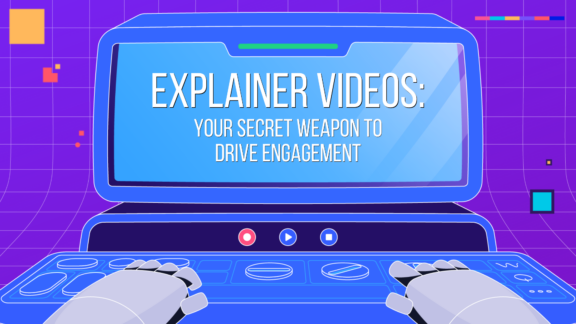- All
- 3D
- Animation
- AWS Activate
- B2B
- B2C
- Bit of Both
- Blog
- Cisco
- DB Culture
- Education
- Emmy® Award Winning
- Entertainment
- Explainer LP
- Featured
- Finance
- Fitness
- Healthcare
- HIMSS
- InBound19
- Live Action
- Live Action LP
- Manufacturing
- Marketing
- Motion Graphics LP
- Software + Tech
- The Drip
- Uncategorized
- Video Marketing
- What We Do Bit Of Both
- What We Do Live Action
Types of Animation
July 1, 2022

While we only use a couple types of animation here at Digital Brew, we thought it would be fun (and interesting) to check out the different techniques in the world of motion graphics. Some of these styles may not be mutually exclusive, but here are some broad stroke forms of animation:
Cel (Traditional)
To kick off our types of animation , we’re going to start with cel animation. Sometimes referred to as simple “hand-drawn animation”, this style is what you see when you watch classic Disney or Looney Tunes films. Here, the animated characters are drawn and inked directly onto celluloid frames. Ever notice how sometimes the characters in your favorite cartoons are slightly more vibrant than the backgrounds? That’s because the character frames are placed over a stationary background. This way the animators don’t have to redraw every aspect of every frame you see.
Digital 2D Animation
2D animation creates a similar look to traditional animation but is done in a digital space. One of the advantages of digital 2D is that instead of having to animate frame-by-frame, you have the ability to treat objects and characters, a little like puppets. You can record the movement of that character waving instead of having to draw each frame of it.
3D Animation
3D animation is what Pixar is known for. This is where animators create characters and objects that appear three-dimensional, but unlike stop-motion animation, 3D animation is fully digital. The characters, the environments, the lighting; everything you see is created in the digital space. Now, that’s not to say you couldn’t put a 3D character into live-action footage. Ever see any of those chipmunk movies?
Motion Capture
The cool thing about motion capture animation is that it can fully capture an actor’s performance. You’ve probably seen the photos of actors in black suits covered in tiny dots. For example, take Gollum in the Lord of the Rings trilogy; he’s a fully CG character but his movements and animation are based off of Andy Serkis’ performance. That’s probably the earliest well known example of motion capture in the movies, but video games have been using this technique since the late 80’s!
Stop Motion
Tim Burton’s The Nightmare Before Christmas is probably the most famous example of this type of animation. This technique relies on manipulating real objects (often times made of clay, which is where this technique got its other name: claymation) frame by frame, and taking a photo each time. It’s a little like cel animation in a real space but instead of drawing the new frames, you’re physically moving the characters for each frame. But stop motion doesn’t necessarily have to use 3D objects. Did you know that the original South Park pilot was created with construction paper using stop motion?
Rotoscoping
Developed in the early 1900’s, rotoscoping involves animators drawing over live action footage frame-by-frame. Nowadays we use computer programs that run rotoscoping processes, but it’s rare that full features are rotoscoped (even though Richard Linklater has done it a couple of times). More often it’ll be an element or a character for specific movements, but rotoscoping can also be used for live-action footage. The lightsabers in Star Wars are rotoscoped over to create the effect we see in the final film.
Let’s Draw Together!
We may not use all of the types of animation listed above at Digital Brew (you won’t find anyone inking film cels in our office) but we have a talented team of award-winning animators here to help bring your marketing ideas to life through the magic of animation! When you’re ready to make your next marketing video, feel free to reach out and we can help figure out which animation style works best for you.
Let’s Brew This!





